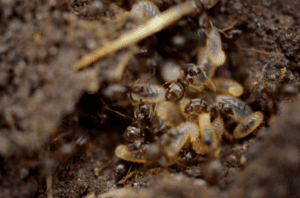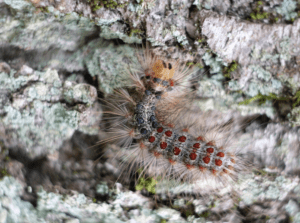
During the winter, the risk of rodent infestations escalates, prompting the need for proactive prevention measures. The colder months drive mice and rats indoors, seeking warmth and shelter. Beyond the annoyance of gnawed belongings and scratching sounds, rodent infestations pose serious health risks and structural damage. This article explores effective strategies to fortify homes against winter invaders, emphasizing the importance of early detection, sealing entry points, and when to call in pest control experts.
Identifying Common Winter Rodents
Common winter rodents, such as mice and rats, seek shelter indoors as temperatures drop. These creatures are opportunistic and can enter homes through tiny openings. Mice are small with pointed noses, large ears, and slender bodies, typically measuring 2-4 inches in length, excluding the tail. Rats are larger, ranging from 6-10 inches, with stout bodies, blunt noses, and smaller ears relative to their size. Both have fur-covered tails, but mice tails are longer compared to their body length, while rat tails are shorter. Mice droppings are smaller and rod-shaped, while rat droppings are larger and capsule-shaped.
In winter, rodents are drawn to warmth and seek shelter indoors, often nesting in hidden spaces like attics, walls, basements, and crawl spaces. They exploit gaps around utility lines, doors, and vents for entry. Rodents also create nests in cluttered areas, within insulation, and behind appliances. Identifying and sealing these entry points is crucial for effective rodent prevention. Often nocturnal, they remain elusive, making detection challenging. Indications of a rodent infestation include discovering droppings in hidden areas, observing gnaw marks on wires or furniture, and detecting a lingering musty odor from nesting. Unexplained scratching or rustling sounds within walls, particularly during quiet moments, may signify rodent activity. The presence of shredded materials for nests and chewed packaging around stored food also serves as evidence. Swift identification of these signs is crucial, allowing timely intervention to prevent potential health risks, structural damage, and a more extensive infestation.
Rodent-Proofing Your Home
To deter rodents and protect your home or business, start by sealing entry points. Keep attics, basements, and crawl spaces well-maintained and clutter-free to limit hiding spots. Eliminate food sources by storing pantry items and pet food in sealed containers and promptly cleaning crumbs or spills. Regularly dispose of garbage in secure bins and maintain a clean environment. Trim vegetation near buildings, reducing potential hiding places. Employ outdoor bait stations to discourage rodents from seeking shelter on your property.
For active infestations, deploy effective traps strategically. Snap traps, electric traps, or live traps can be employed based on preferences. Bait traps with peanut butter, chocolate, or seeds, and place them along known rodent pathways or near entry points. Check traps regularly and dispose of captured rodents promptly. Consider professional pest control for severe infestations.
Consistency is key; implement preventive measures and promptly address signs of rodent activity to create an inhospitable environment, minimizing the risk of infestations and protecting your space from potential damage and health hazards.
Fixing Rodent Entry Points
Prompt action in sealing entry points is vital to prevent infestations and mitigate potential damage to property and health risks. By addressing the following common entry points with appropriate sealing techniques, you create a more rodent-resistant barrier, minimizing the likelihood of infestations and safeguarding your home. In addition to these techniques, regular inspections and maintenance are essential to ensure ongoing effectiveness.
- Inspect Exterior: Begin by thoroughly inspecting the exterior of your home or business for potential entry points. Look for gaps around utility lines, doors, vents, and cracks in the foundation or walls.
- Seal Utility Line Entry Points: Use steel wool or caulk to seal gaps around utility lines entering your home. Mice and rats can easily squeeze through small openings, so pay attention to even minor gaps.
- Door Sealing: Install door sweeps at the bottom of exterior doors to prevent rodents from slipping through. Ensure that doors have a snug fit within their frames, and repair or replace damaged weather-stripping.
- Vent Protection: Cover vents with mesh screens to block rodent access. Use a sturdy material that allows for proper ventilation but prevents entry. Regularly inspect and clean these screens to maintain effectiveness.
- Window Seals: Apply weather-stripping or sealant around windows to eliminate gaps. Check for any cracks in window frames and repair them promptly. Ensure tight-fitting screens on windows.
- Foundation and Wall Cracks: Seal foundation cracks and gaps in walls with expanding foam or concrete patch. Ensure a comprehensive approach, addressing both interior and exterior cracks.
- Attic and Crawl Space Inspection: Examine attics and crawl spaces for potential entry points. Seal openings with wire mesh or other durable materials.
When to Seek Professional Assistance
When signs of rodent activity become pervasive, immediate action by pest control professionals is crucial. If you notice an increasing number of droppings, gnaw marks on furniture or wiring, or detect a persistent musty odor signaling nesting, it's time to seek professional assistance. Unexplained scratching or scurrying sounds within walls may also indicate an extensive infestation requiring expert intervention.
Attempting to handle severe rodent issues independently is often ineffective, and store-bought solutions may not provide lasting results. The pest control professionals at Twin-Boro bring specialized knowledge, experience, and access to advanced techniques and tools. We conduct thorough inspections to identify entry points and vulnerabilities, implementing targeted strategies for sealing gaps and eliminating infestations. We will not only address the current problem but also develop tailored prevention plans, educating home and business owners on proactive measures. Our expertise and Integrated Pest Management (IPM) approach ensures the use of safe and effective treatments, minimizing health risks associated with rodent-borne diseases and reducing the likelihood of structural damage.
Engaging pest control services is imperative for long-term success in rodent-proofing, safeguarding homes and businesses from the potential hazards and nuisances posed by rodent infestations. For a free inspection of your home or business, or to get started with a rodent control plan, visit Twin-Boro’s homepage today.






